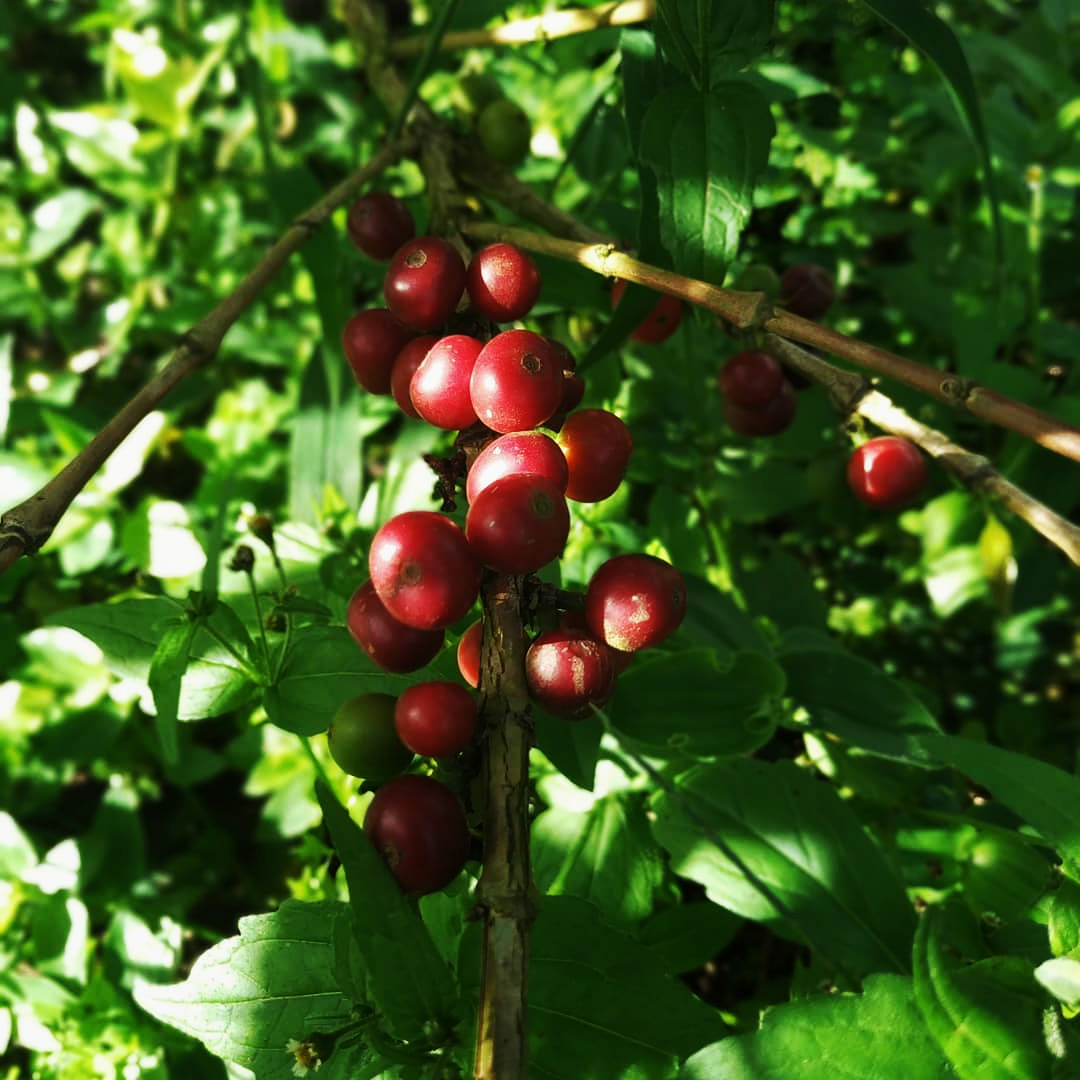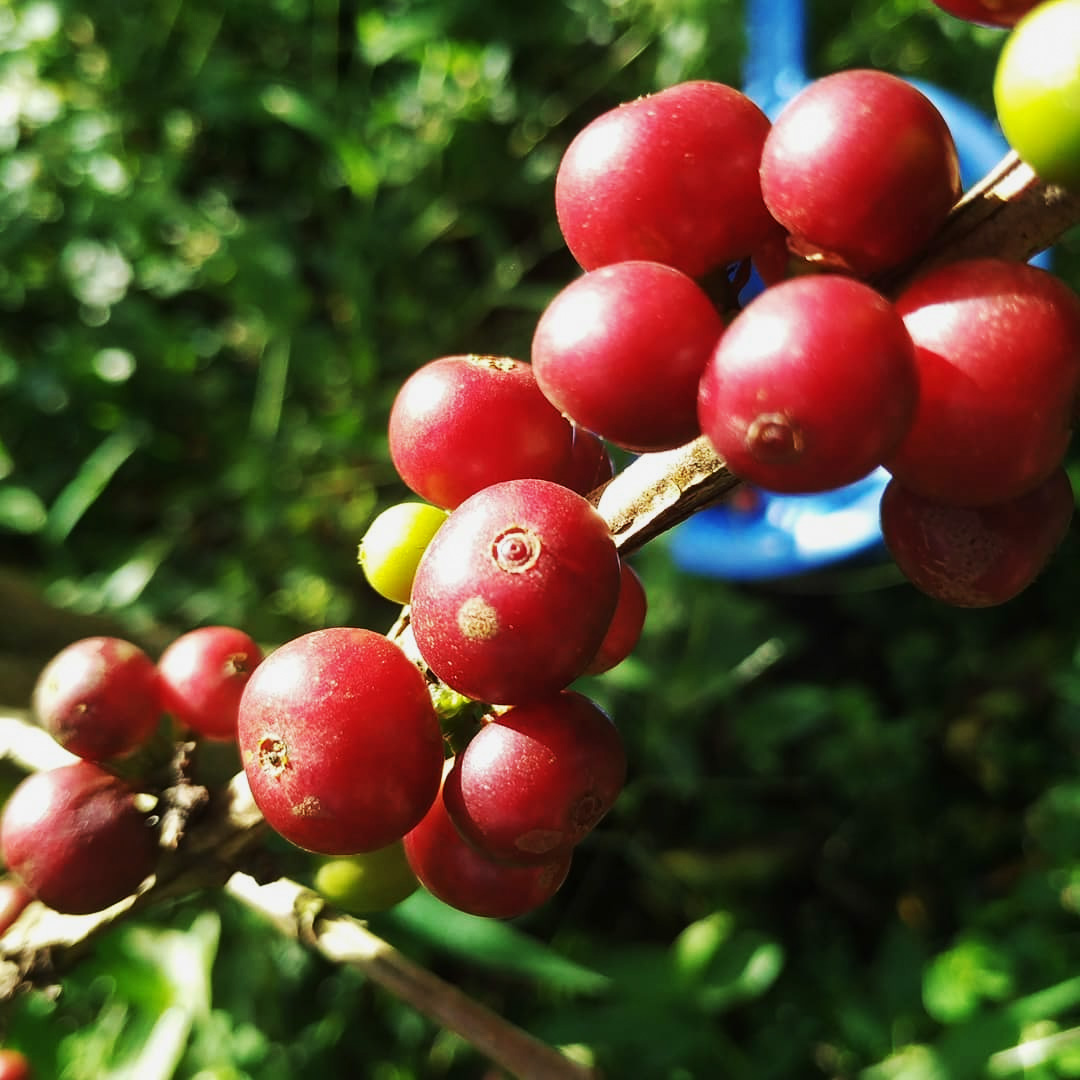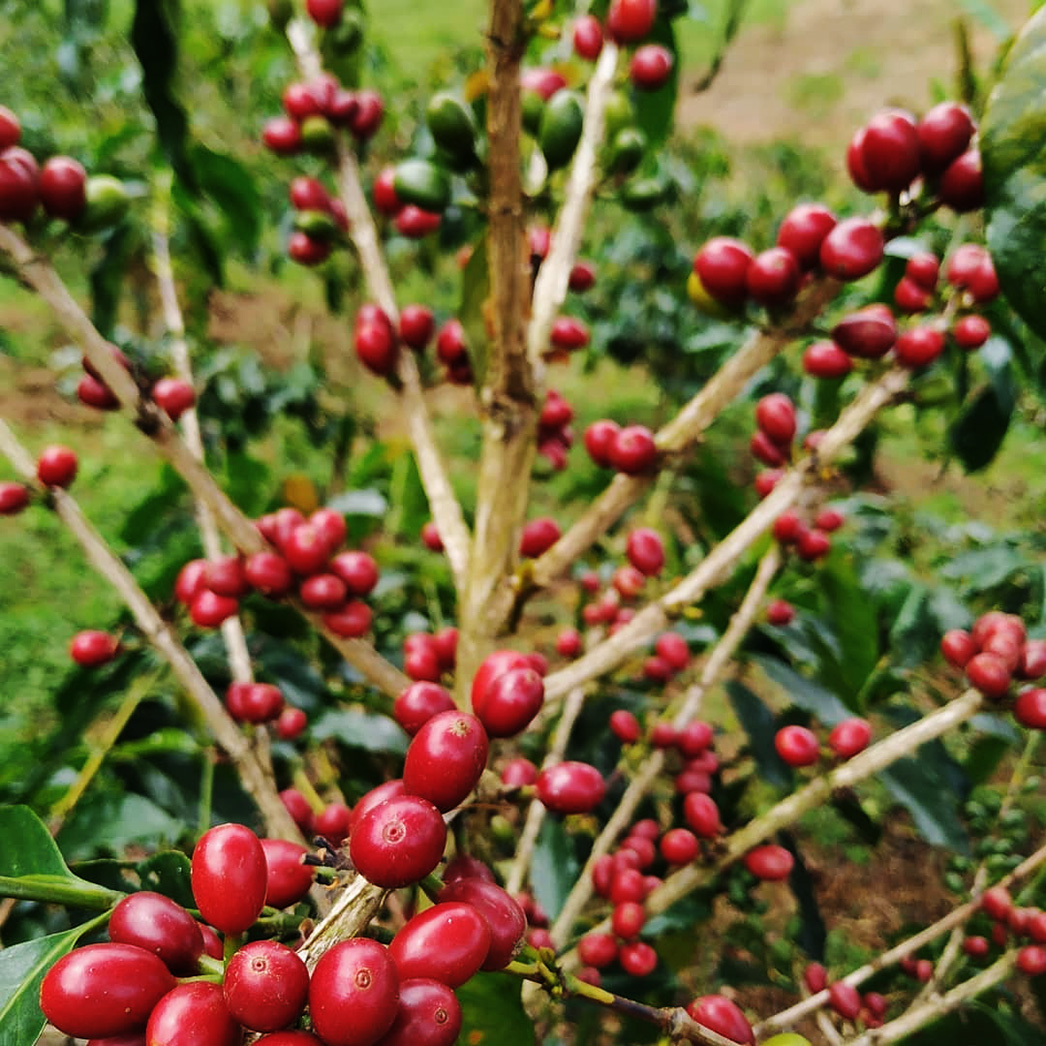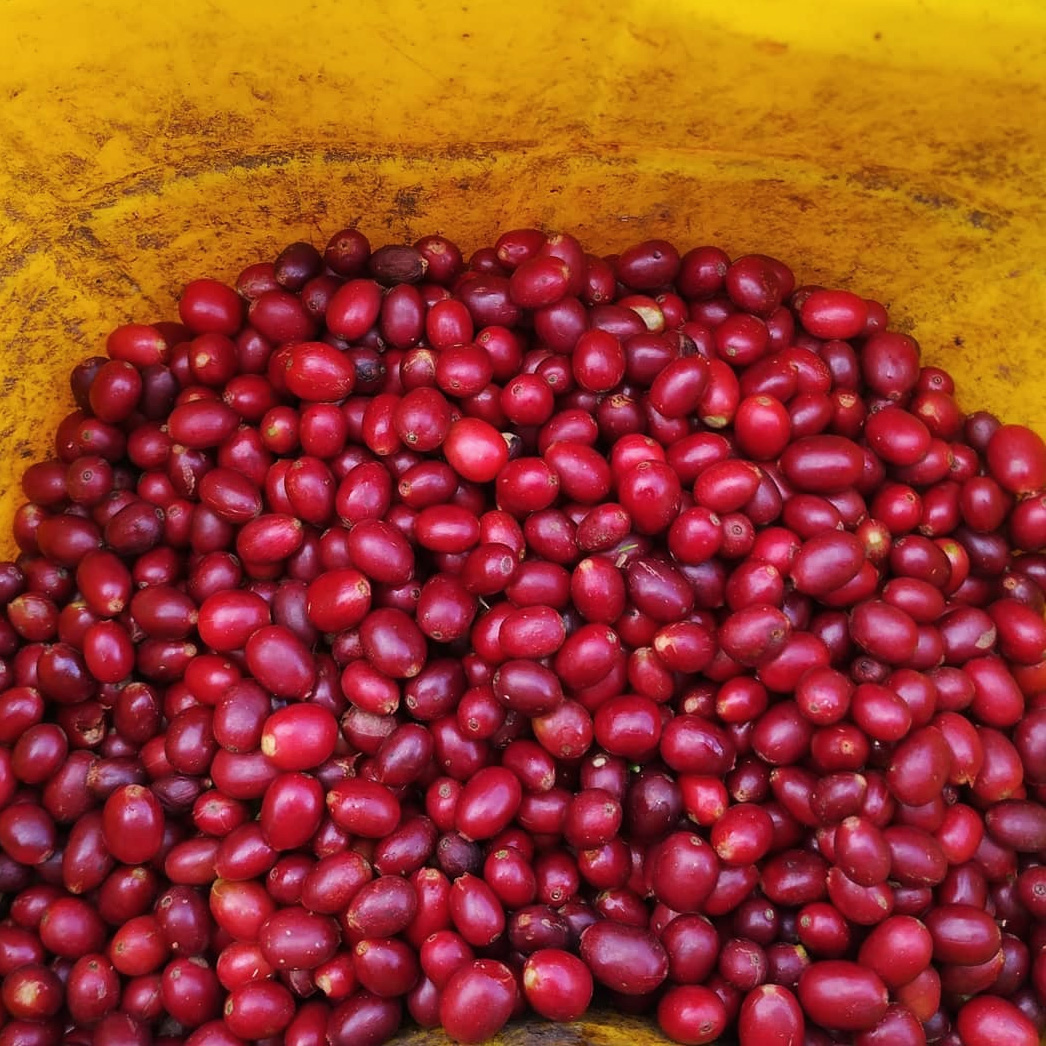Over the last decade or so, the range of varieties grown in Colombia has greatly increased (Flórez Ramos et al 2017). Traditional varieties such as Typica, Bourbon, and Maragogype are no longer intensively cultivated, largely replaced by the rust-resistant hybrids developed by Cenicafé. Specialty-focused producers, on the other hand, have turned to exotic and rare varieties as a source of new flavour profiles.
Two popular examples are Wush Wush and Rume Sudan, descended from wild varieties collected in East Africa. Old cultivated varieties are also becoming more common in Colombia. Moka, a low-yielding dwarf variety cultivated in Yemen, is known for its tiny seeds (Flórez Ramos et al 2017).
Moka is a low-yielding variety that produces unusually small fruit. Image courtesy of Finca Villa Betulia
Java, originally an Ethiopian landrace, was cultivated on the island of Java and then brought to the Americas in the 1990s. Java can produce high cup quality, and it shows some tolerance to leaf rust and coffee berry disease (World Coffee Research 2022).
Ripe Java cherries. Image courtesy of Finca Villa Betulia
Genetic testing has revealed that some of Colombia’s most distinctive varieties are most likely descended from Ethiopian landraces. In Lesson 3.01, we discussed the most famous example: Pink Bourbon. This variety was widely assumed to be a Bourbon hybrid, but genetic analysis suggests that it is more closely related to wild Ethiopian varieties than it is to Bourbon.
Another example is Chiroso, sometimes referred to as Caturra Chiroso because of its short stature. This variety, recognised by its elongated cherries and seeds, similar to Geisha, is prized for its floral aromas and high sweetness.



